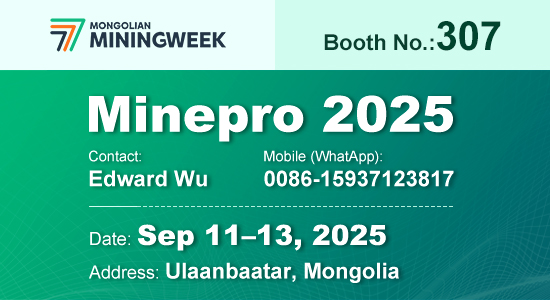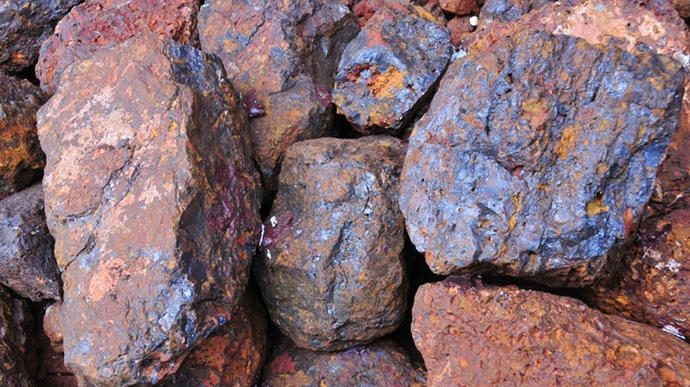In the rapidly evolving world of mineral processing and aggregate production, mobility and efficiency have become the defining factors for success. Traditional stationary crushing plants, while powerful, often lack the flexibility required to meet the fast-paced demands of modern construction and mining industries.
LIMING Heavy Industry, a global leader in crushing and grinding equipment, has taken a significant leap forward by developing a new generation of high-efficiency tracked mobile crushing and screening stations. These advanced mobile systems — including the tracked jaw crusher, tracked cone crusher, impact crusher station, and mobile screening plant — are designed to maximize productivity, reduce operational costs, and deliver superior environmental performance.

Why Tracked Mobile Crushing Stations Are Changing the Game
1. Unmatched Mobility and Flexibility
One of the key advantages of a tracked mobile station is its ability to move freely across challenging terrain. Unlike stationary installations, tracked crushers are mounted on durable crawler chassis, enabling them to navigate muddy, rocky, or uneven ground without the need for additional transport equipment.
This high degree of mobility means crushing operations can be brought directly to the material site — eliminating the need for costly haulage, minimizing downtime, and improving overall efficiency. Whether it’s a construction waste recycling yard, a limestone quarry, or a remote mining site, LIMING’s tracked units can be deployed rapidly, ensuring seamless production continuity.
2. Integrated Intelligent Control Systems
Efficiency in modern production is no longer just about mechanical performance — it’s about smart control. LIMING’s tracked mobile crushers and screening stations are equipped with intelligent PLC control systems, allowing operators to monitor, adjust, and optimize every stage of the process through a centralized digital interface.
Features such as automatic load balancing, hydraulic adjustment, and real-time diagnostics ensure that each machine runs at peak efficiency while reducing the risk of unplanned maintenance. This intelligent automation is the backbone of LIMING’s “Smart Crushing” concept, designed to meet the growing demand for precision, data-driven production in the global aggregates and mining sectors.
3. High-Efficiency Crushing Performance
Each mobile station is tailored to handle specific crushing stages with exceptional performance:
Tracked Jaw Crusher:
Ideal for primary crushing of hard materials such as granite, basalt, and limestone. The robust jaw structure and optimized feed design ensure large throughput and uniform particle size.Tracked Cone Crusher:
Perfect for secondary or tertiary crushing, delivering excellent particle shape and consistent output. Its advanced hydraulic system and wear-resistant liners extend service life and reduce maintenance costs.Impact Crusher Station:
Designed for medium and fine crushing, particularly effective in construction waste recycling and limestone aggregate production. The unique rotor structure provides strong crushing force and remarkable efficiency.Mobile Screening Station:
Complements the crushing units by providing precise material separation, ensuring that only qualified products enter the next stage of production. The multi-layer vibrating screens can be adjusted for different material sizes and end uses.
Together, these stations form a modular, fully integrated mobile processing line capable of handling diverse materials under a wide range of conditions.
Applications Across Key Industries
1. Construction Waste Recycling
Urbanization and infrastructure renewal projects generate millions of tons of construction and demolition waste annually. LIMING’s tracked mobile crushers and screening systems transform this waste into high-quality recycled aggregates.
Concrete blocks, bricks, asphalt, and steel-reinforced debris can be efficiently crushed, screened, and reused in new construction projects — significantly reducing landfill waste and carbon footprint.
By promoting the concept of “Crush on Site, Reuse Immediately”, LIMING enables contractors to meet green building standards and reduce transportation costs simultaneously.
2. Limestone Crushing and Aggregate Production
Limestone is one of the most essential raw materials in cement, asphalt, and concrete production. However, traditional stationary crushing plants often struggle with site relocation and high installation costs.
With LIMING’s tracked jaw and cone crusher stations, quarry operators can establish flexible, mobile production lines that adapt to changing resource locations. This mobility ensures consistent aggregate supply while minimizing environmental disruption and energy consumption.
The advanced dust suppression and noise control systems integrated into LIMING’s equipment also meet international environmental regulations, making them ideal for eco-conscious aggregate producers.
3. Mining and Mineral Processing
Mining operations demand robust, reliable, and high-output crushing systems capable of processing ore under extreme conditions. LIMING’s mobile units are engineered with heavy-duty components, offering exceptional endurance and continuous operation in challenging environments.
From iron ore and copper to coal and gold, LIMING’s tracked stations provide scalable solutions that can be easily repositioned as mining sites evolve — eliminating the need for complex infrastructure and expensive foundation works.
Eco-Friendly and Energy-Efficient Design
As sustainability becomes a global priority, LIMING Heavy Industry has made environmental responsibility a central focus of its product development strategy.
Each tracked mobile station incorporates features that promote energy efficiency and reduce emissions:
Low fuel consumption engines with advanced emission control technologies
Electric-hybrid power options for reduced CO₂ footprint
Intelligent idle and start-stop systems that minimize energy waste
Enclosed structures and dust collection units for cleaner, quieter operation
These innovations position LIMING as a frontrunner in green crushing technology, aligning industrial productivity with environmental protection.
Technical Advantages at a Glance
| Feature | Description |
|---|---|
| Mobility | Crawler chassis for all-terrain movement |
| Automation | Smart PLC control and remote monitoring |
| Output | High capacity, stable performance across materials |
| Energy | Low fuel consumption, hybrid options available |
| Maintenance | Modular design and quick access for servicing |
| Environmental | Noise suppression and dust control systems |
| Customization | Configurable modules for diverse applications |
Global Recognition and Project Success
LIMING Heavy Industry’s mobile crushing and screening solutions have been successfully deployed in more than 120 countries and regions, including Southeast Asia, the Middle East, Africa, Europe, and South America.
Recent flagship projects include:
A 5000 TPH limestone solid waste recycling project in Hebei, China, delivering over 20 million tons of high-quality aggregates annually.
A construction waste recycling plant in Malaysia, utilizing LIMING’s tracked impact crusher and screening system to produce sustainable building materials.
A gold mining operation in Africa, where the mobile jaw and cone crushers improved ore throughput by 35% while reducing operational downtime.
These achievements demonstrate LIMING’s ability to deliver tailored, high-performance crushing solutions that meet the unique requirements of each client and region.
Commitment to Innovation and Service
Beyond equipment manufacturing, LIMING Heavy Industry provides a comprehensive range of EPC (Engineering, Procurement, and Construction) services, covering everything from site planning and process design to installation, commissioning, and after-sales support.
The company’s R&D team continuously integrates the latest technologies — such as AI-assisted process optimization, predictive maintenance, and IoT-based fleet management — ensuring customers always benefit from cutting-edge solutions.
LIMING’s mission is clear: to empower global industries with efficient, intelligent, and sustainable crushing equipment that drives both economic growth and environmental responsibility.
The Future Is Mobile, Intelligent, and Green
As global industries shift toward smarter and cleaner production methods, the demand for efficient tracked mobile crushing and screening plants will only continue to grow.
With its deep engineering expertise, world-class manufacturing capabilities, and unwavering commitment to innovation, LIMING Heavy Industry stands at the forefront of this transformation — redefining what’s possible in mobile crushing technology.
Whether in construction waste recycling, limestone aggregate production, or mining applications, LIMING’s advanced tracked stations are not just machines — they are complete solutions for a more sustainable and productive future.









